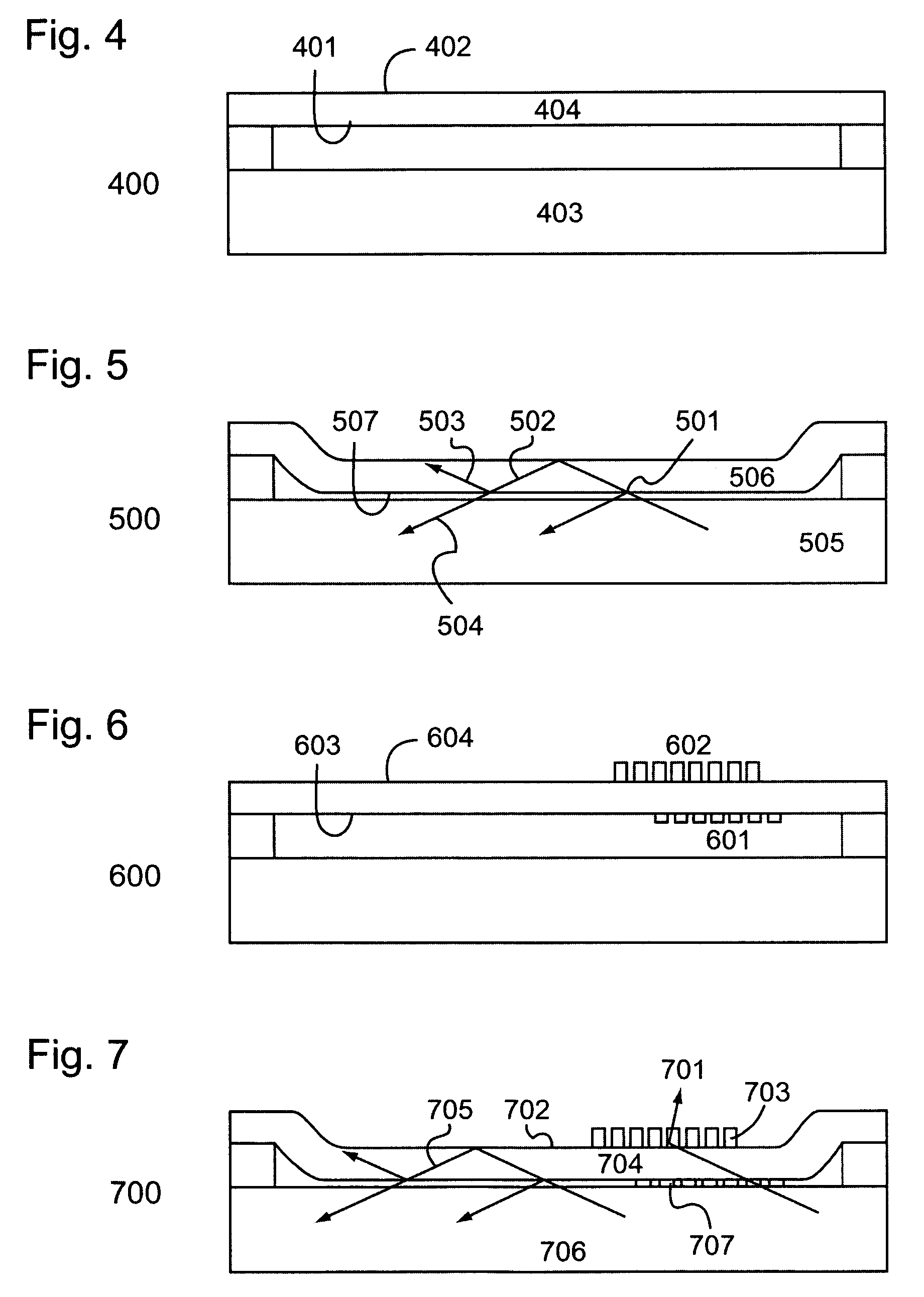Optical microstructures for light extraction and control
a microstructure and optical technology, applied in the field of optical microstructures for light extraction and control, can solve the problems of inefficient light coupling, inability to reach the viewer, and inefficient material at all times, so as to improve contrast, enhance the light extraction process, and increase the probability of light wave release
- Summary
- Abstract
- Description
- Claims
- Application Information
AI Technical Summary
Benefits of technology
Problems solved by technology
Method used
Image
Examples
Embodiment Construction
[0029]In the following description, numerous specific details are set forth to provide a thorough understanding of the present invention. However, it will be apparent to those skilled in the art that the present invention may be practiced without such specific details. In other instances, detailed physical features are idealized in order not to obscure the present invention in unnecessary detail. For the most part, details considering timing considerations and the like have been omitted inasmuch as such details are not necessary to obtain a complete understanding of the present invention and are within the skills of persons of ordinary skill in the relevant art.
[0030]The general concept of TMOS, as originally expressed in U.S. Pat. No. 5,319,491, is briefly illustrated in FIGS. 2 and 3. In FIG. 2, a side view 200 of one pixel 101 is shown, first in the “off” position 211, and second in the “on” position 212. An internal light guide 201, and the light waves 204 contained therein, are...
PUM
 Login to View More
Login to View More Abstract
Description
Claims
Application Information
 Login to View More
Login to View More - R&D
- Intellectual Property
- Life Sciences
- Materials
- Tech Scout
- Unparalleled Data Quality
- Higher Quality Content
- 60% Fewer Hallucinations
Browse by: Latest US Patents, China's latest patents, Technical Efficacy Thesaurus, Application Domain, Technology Topic, Popular Technical Reports.
© 2025 PatSnap. All rights reserved.Legal|Privacy policy|Modern Slavery Act Transparency Statement|Sitemap|About US| Contact US: help@patsnap.com



